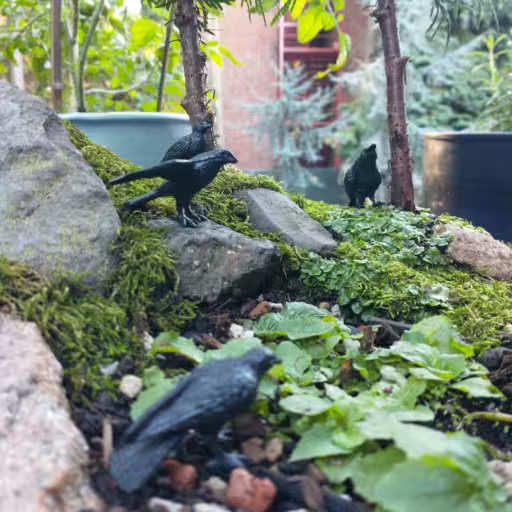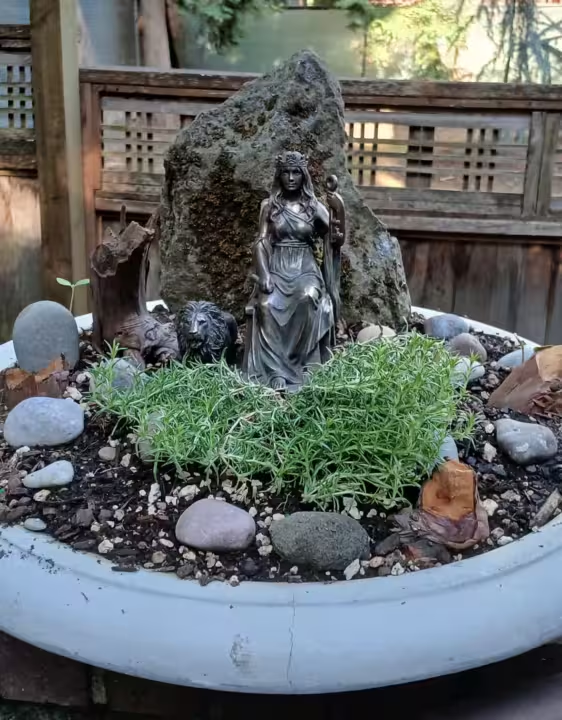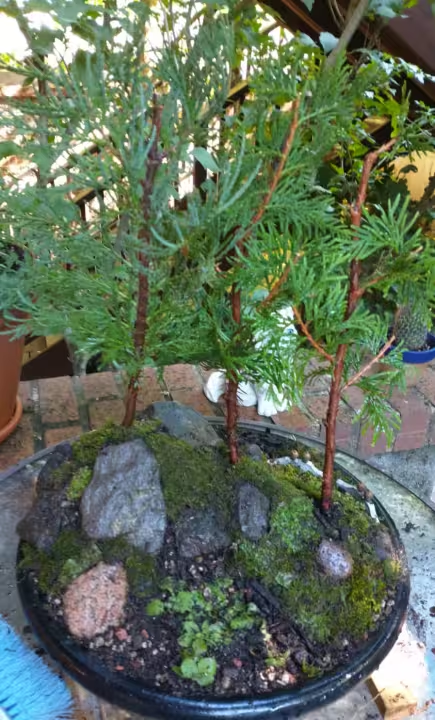Roaming my neighborhood to look for the rocks and moss was one of the most enjoyable experiences of the first penjing project I made, so this time I wanted to step up my game and do a proper fall foraging! I took a stroll around my neighborhood, armed with a plastic bin and a putty knife, with the goal of finding maple seeds, chestnuts, pine cones, and lots of moss. With the coming cold temperatures, this would likely be one of the last chances I will get this year to enjoy a long, languid foraging walk.
Near my home, there is a graveyard that is also a park and arboretum. It’s a beautiful place, full of trees everywhere you look, where many prominent people from my city’s past lay buried, not to mention some victims of its shameful racist past. I’ve considered having my ashes entombed in the ossuary here as well, when my time comes. Until then, though, I have a lot of projects I want to accomplish!
While this would be a completely improper place to collect moss, I knew that I would be able to find many lovely seeds here, and I was not disappointed! I found plenty of chestnuts, pinecones, and other what I believe to be seeds in the park. What can I say, I’m new at this?! On my walk back home, I came across several Japanese maples where I found handfuls of seeds from several varieties. People in the Pacific Northwest seem to love these trees, probably because they seem to do so well in our climate. Likewise, moss is never hard to find in our climate. Dark and damp days lead to moss growing in every area not directly exposed to the sun. I scooped up several piles and put them in the bin with my seed haul.
Returning home with my prize led me to the question of “what do I do now?” Can I go right ahead and plant them in my pots and put them under a grow light? I knew that I should be patient and look for answers. After a bit of research, I found out about stratifying seeds. This is a process where seeds are artificially exposed to winter-like conditions to break their embryonic dormancy phase. This is required for the seeds of some trees in order to grow. Trees themselves also require a dormancy period during the winter so they can gather energy to grow in the spring, which could be a possible problem for me next year as I keep my penjing projects indoors this year.
To simulate the conditions of winter, I put the seeds into sealable plastic bags with top soil. I cut a few air holes in the bags, and placed them in my refrigerator. There they will stay for around 90 days, at which time I will soak them overnight before planting and placing them under my grow lights. I didn’t have any way to keep all of the seeds sorted while I was gathering them, so I will just plant all of them and see what grows from them! I intend to enjoy the process.
I’ve been rooting several clones (and two walnut seeds!) under the lights this past season. I hope by the time the 90 days are over, they can return outside. I’ve been wanting to give them some time inside where they can be safe from squirrels and other varmints! I will then grow these seeds inside as well, to keep them safe from the same.
Enjoy the journey, and patiently await the new growth!


